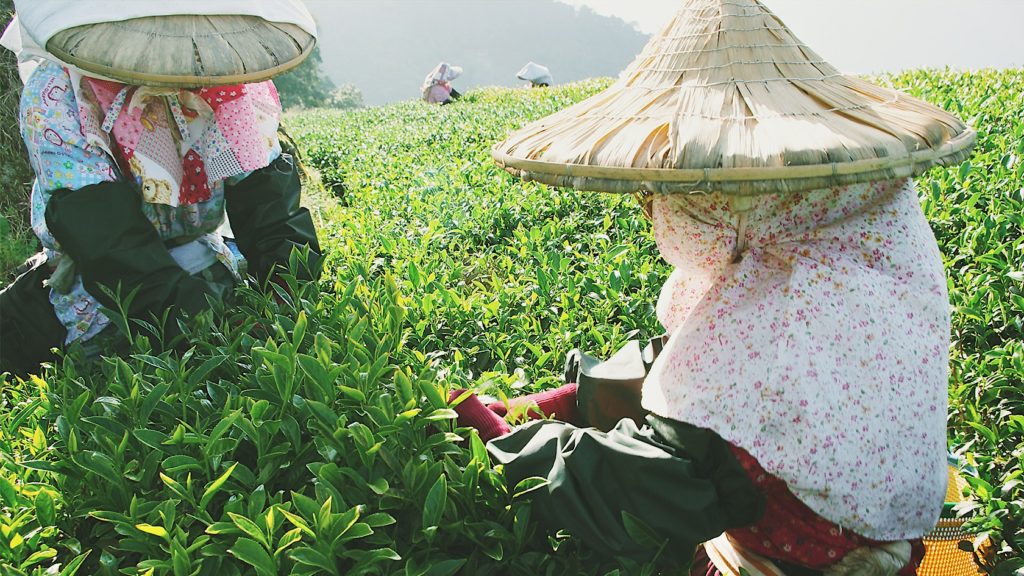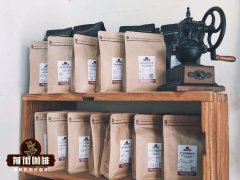Classification of common tea characteristics and processing methods of tea production
A brief introduction to the tea processing process
Due to the differences in the quality characteristics of tea after the production and processing process, tea can be divided into two systems: (1) according to the degree of tea fermentation and oxidation in the tea processing process: unfermented tea, partially fermented tea and fully fermented tea. (2) according to the appearance and color of tea products, it can be divided into green tea, yellow tea, white tea, green tea, black tea and black tea.

(1) processing tea with different fermentation degrees
In the processing process, tea cyanine withered and lost water, and the leaf tissue was destroyed by stirring and rolling, which further oxidized the chemical components of tea, including catechins and other polyphenols in tea, which were oxidized by the reaction of polyphenol oxidase (Polyphenol oxidase) and peroxidase (Peroxidase). Therefore, tea can be divided into unfermented tea, partially fermented tea and fully fermented tea.
1. Unfermented tea:
The general process is that tea cyanine is directly killed to destroy the activity of enzymes in tea and inhibit enzyme oxidation. Unfermented tea is mainly green tea, while Taiwan green tea is mainly produced in the north, such as Biluochun and Longjing, mainly in strip shape and a few in flake shape. Green tea is the same day, tea cyanine withered slightly after water loss, directly to high temperature for a short time to kill cyanine, inhibit enzyme activity, prevent tea oxidation reaction, so the color is mostly bright green.
two。 Fully fermented tea:
After properly withering and losing water, the tea cyanine was rolled to destroy the tea tissue to release the enzymes and adjust the appropriate relative humidity to make the enzymes react with the tea contents for oxidation. After enough reaction time, the tea leaves were completely fermented and oxidized. Fully fermented tea is mainly black tea, Taiwan is mainly in the central Nantou as the producing area, with large-leaf species as the main production varieties, and a small amount of small-leaf species. Black tea is divided into strip shape and broken shape according to the final tea pattern. Black tea is moderately withered after planting, and the tea is rolled and broken up by shredding or not, and the tea is fermented and oxidized in the repeated procedure of kneading and unblocking. The subsequent oxidation replenishment reaction is carried out under high relative humidity. When the unique aroma and color of black tea are formed, the enzyme activity is stopped at high temperature and the product is made by drying.
3. Partially fermented tea:
The oxidation degree of some fermented tea is between non-fermented tea and fully fermented tea, and the tea production process changes greatly. The aroma and taste of some fermented tea have special requirements for the quality of tea cyanine, so the tea-making process will produce some fermented tea with different characteristics according to the quality characteristics of tea cyanine and the temperature of the environment. There are many kinds of fermented tea, which is the main tea produced in Taiwan. the degree of fermentation is estimated according to the degree of oxidation of catechins and other polyphenols in tea, and the content of catechin and other polyphenols in unoxidized green tea is set at 100%. If the tea sesame withered after planting, the catechin content in its tea is still 90% compared with that of green tea, so the degree of fermentation of its tea is about 10%. Then, after sunlight withering, the low-degree fermentation of packaged tea and alpine oolong tea was carried out, and the degree of fermentation was about 8-25%. Due to the low degree of fermentation, the water color of the tea was light and the smell was light. The fermentation degree of frozen top oolong tea is about 25-30%, that of Tieguanyin tea is about 40%, and that of oriental beauty tea is 50-60%. In the production process of part of the fermented tea, the tea is withered by sunlight or hot air after picking, followed by indoor withering and uniform mixing during withering, which aims to make the tea lose water evenly and promote the oxidation reaction in the stirring process. so that the tea produces a unique color and aroma, this step not only determines the oxidation degree of some fermented tea, but also determines the quality of this part of fermented tea.
(2) six major tea processing
Although the production processes of the six categories of tea vary slightly from region to region, the production process will affect the quality of their tea products, so there are certain steps in the basic production process, which are briefly described below:
1. Green tea: it belongs to unfermented tea. Tea cyanine is steamed or fried and then kneaded and dried.
two。 Yellow tea: unfermented tea, tea cyanine after stir-frying, kneading and then stuffy yellow, followed by drying.
3. White tea: part of fermented tea, tea cyanine after a long period of withering, baking and then slightly kneading, and then drying.
4. Green tea: part of fermented tea, the tea will be withered by the sun, and after a period of static and stirring, and then stir-fry, knead, and finally dry.
5. Black tea: a fully fermented tea, tea cyanine is withered and rolled, and given enough time for fermentation and oxidation, followed by drying.
6. Black tea: belongs to post-fermented tea, tea cyanine is killed and rolled, and then fermented by microorganisms, then dried into black tea, followed by further autoclaved forming to form tight-pressed black tea.
(2) introduction to the processing process of tea with Taiwan characteristics
Due to the differences in local climate, planting varieties and processing methods, Taiwan tea has developed a variety of teas. According to the different processing processes, Taiwan tea can be divided into eight special tea categories and classified into six tea families.
1. Taiwan green tea: the representative tea is Biluochun green tea in the three Gorges.
two。 Fragrant bar-shaped seed tea: represents the tea category for Wenshan bag tea.
3. Fragrant spherical oolong tea: the representative tea is alpine oolong tea.
4. Baked flavor ball oolong tea: representative tea is frozen top oolong tea, Tieguanyin tea, red oolong tea.
5. Oriental Beauty Tea: the Oriental Beauty Tea, also known as Bai Hao Oolong Tea, which is produced in Shiding and Taozhu Miao area.
6. Taiwan black tea: the representative tea is Sun Moon Lake black tea, lobular black tea, honey fragrant black tea.
The related processes are shown in the following figure:
Tea processing process
II. The purpose of tea processing
(1) withering:
Withering can be divided into sunlight (hot air) withering and indoor withering. Sunlight (hot air) withering chamber dissipates tea moisture by heat energy, and sunlight withering moves indoors for indoor withering to continue to dissipate tea moisture. The withering process can reduce the weight, volume and hardness of tea, and promote chemical reaction to produce special aroma and flavor.
(2) stirring (wave cyanine):
When making part of the fermented tea, at the initial stage, the tea cyanine water is redistributed by turning, so as to achieve the purpose of reducing the water content of the tea stem. Subsequently, the friction damage of tea cells was caused by stirring, the effects of polyphenoloxidase and catechin were increased, and then the degree of tea fermentation was controlled.
(3) killing:
Heat destroys the activity of enzymes in tea, and promotes the dissipation of tea water and softening of leaves, which is beneficial to the subsequent kneading and forming, remove the bad taste of tea and stabilize the color and aroma of tea cyanine.
(4) rest and moisturize:
After the tea is fried out of the pan, it is covered with a wet cloth and remoistened for about 10 minutes, which can redistribute the moisture of the tea, avoid breaking leaves during kneading and easy to form, increase the smell of honey and ripe fruit, and make the leaves turn red.
(5) knead and roll:
Make the tea curl into strips, destroy the cell tissue of the tea, make the juice of the tea adhere to the surface, increase the flavor during brewing, severely destroy the tea cells during the rolling of black tea, and promote the reaction of polyphenoloxidase and catechin to produce the color, flavor and quality of black tea.
(6) supplementary fermentation:
The fermentation degree of the rolled tea is insufficient, so it is necessary to stack the tea for supplementary fermentation to make the polyphenoloxidase react fully with catechins to produce the color, flavor and quality of black tea.
(7) drying:
The moisture in the tea is removed by hot air, the water content is reduced to less than 5%, the preservation period is prolonged, and the fermentation and other biochemical reactions can be stopped to fix the quality. In addition, the heating process can also cause changes in some chemical components to promote the formation of tea aroma. The shape of the tea can be fixed after drying, which is convenient for packaging and transportation.
(8) Hot dough kneading:
The key step of spherical oolong tea. The dried tea leaves were heated to 60-65 ℃, covered with cloth towels to form cloth balls, rolled under a flat kneading machine, and then unblocked. The tea leaves were gradually curled into balls several times.
(9) Baking:
Baking has the effect of removing moisture, effectively prolonging the storage life of tea, improving the cyanine odor and bad miscellaneous smell commonly found in crude tea, and increasing the special aroma and characteristics of tea.
Important Notice :
前街咖啡 FrontStreet Coffee has moved to new addredd:
FrontStreet Coffee Address: 315,Donghua East Road,GuangZhou
Tel:020 38364473
- Prev

How to preserve boutique coffee beans? What are the correct ways and techniques to preserve coffee beans?
Professional coffee knowledge exchange more coffee bean consultation Please pay attention to the coffee workshop (Wechat official account cafe_style) to be able to taste a cup of high-quality coffee, every link is very important. Qianjie coffee often mentions the freshness of coffee beans, in fact, this is related to its preservation method. Chinese people pay attention to freshness in the things they put into their mouths, and the same is true of coffee.
- Next

The difference between a fine latte and a single latte
Professional coffee knowledge exchange more coffee bean consultation Please pay attention to the definition of fine coffee in the coffee workshop (Wechat official account cafe_style). According to the Fine Coffee Association (SCA), a cup of high-quality coffee must pay attention to details from the beginning of planting, picking and roasting until the cup of coffee is brewed before reaching the strict and exquisite process of fine coffee. An outline of boutique coffee
Related
- Beginners will see the "Coffee pull flower" guide!
- What is the difference between ice blog purified milk and ordinary milk coffee?
- Why is the Philippines the largest producer of crops in Liberia?
- For coffee extraction, should the fine powder be retained?
- How does extracted espresso fill pressed powder? How much strength does it take to press the powder?
- How to make jasmine cold extract coffee? Is the jasmine + latte good?
- Will this little toy really make the coffee taste better? How does Lily Drip affect coffee extraction?
- Will the action of slapping the filter cup also affect coffee extraction?
- What's the difference between powder-to-water ratio and powder-to-liquid ratio?
- What is the Ethiopian local species? What does it have to do with Heirloom native species?

